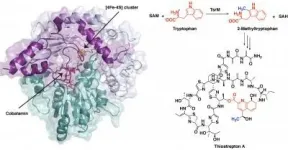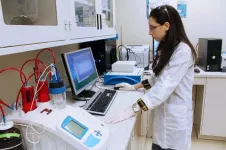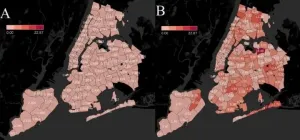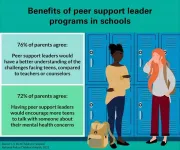(Press-News.org) Some of the low-carbon policy options currently used by governments may be detrimental to the households and small businesses less able to manage added short-term costs from energy price hikes, according to a new study.
However, it also suggests that this menu of decarbonising policies, from quotas to feed-in tariffs, can be designed and balanced to benefit local firms and lower-income families - vital for achieving 'Net Zero' carbon and a green recovery.
University of Cambridge researchers combed through thousands of studies to create the most comprehensive analysis to date of widely used types of low-carbon policy, and compared how they perform in areas such as cost and competitiveness.
The findings are published today in the journal Nature Climate Change. The researchers also poured all their data into an interactive online tool that allows users to explore evidence around carbon-reduction policies from across the globe.
"Preventing climate change cannot be the only goal of decarbonisation policies," said study lead author Dr Cristina Peñasco, a public policy expert from the University of Cambridge.
"Unless low-carbon policies are fair, affordable and economically competitive, they will struggle to secure public support - and further delays in decarbonisation could be disastrous for the planet."
Around 7,000 published studies were whittled down to over 700 individual findings. These results were coded to allow comparison - with over half the studies analysed "blind" by different researchers to avoid bias.
The ten policy "instruments" covered in the study include forms of investment - targeted R&D funding, for example - as well as financial incentives including different kinds of subsidies, taxes, and the auctioning of energy contracts.
The policies also include market interventions - e.g. emissions permits; tradable certificates for clean or saved energy - and efficiency standards, such as those for buildings.
Researchers looked at whether each policy type had a positive or negative effect in various environmental, industrial and socio-economic areas.
When it came to "distributional consequences" - the fairness with which the costs and benefits are spread - the mass of evidence suggests that the impact of five of the ten policy types are far more negative than positive.
"Small firms and average households have less capacity to absorb increases in energy costs," said co-author Laura Diaz Anadon, Professor of Climate Change Policy.
"Some of the investment and regulatory policies made it harder for small and medium-size firms to participate in new opportunities or adjust to changes.
"If policies are not well designed and vulnerable households and businesses experience them negatively, it could increase public resistance to change - a major obstacle in reaching net zero carbon," said Anadon.
For example, feed-in tariffs pay renewable electricity producers above market rates. But these costs may bump energy prices for all if they get passed on to households - leaving the less well-off spending a larger portion of their income on energy.
Renewable electricity traded as 'green certificates' can redistribute wealth from consumers to energy companies - with 83% of the available evidence suggesting they have a "negative impact", along with 63% of the evidence for energy taxes, which can disproportionately affect rural areas.
However, the vast tranche of data assembled by the researchers reveals how many of these policies can be designed and aligned to complement each other, boost innovation, and pave the way for a fairer transition to zero carbon.
For example, tailoring feed-in tariffs (FiTs) to be "predictable yet adjustable" can benefit smaller and more dispersed clean energy projects - improving market competitiveness and helping to mitigate local NIMBYism*.
Moreover, revenues from environmental taxes could go towards social benefits or tax credits e.g. reducing corporate tax for small firms and lowering income taxes, providing what researchers call a "double dividend": stimulating economies while reducing emissions.
The researchers argue that creating a "balance" of well-designed and complementary policies can benefit different renewable energy producers and "clean" technologies at various stages.
Government funding for research and development (R&D) that targets small firms can help attract other funding streams - boosting both eco-innovation and competitiveness. When combined with R&D tax credits, it predominantly supports innovation in startups rather than corporations.
Government procurement, using tiered contracts and bidding, can also improve innovation and market access for smaller businesses in "economically stressed" areas. This could aid the "levelling up" between richer and poorer regions as part of any green recovery.
"There is no one-size-fits-all solution," said Peñasco. "Policymakers should deploy incentives for innovation, such as targeted R&D funding, while also adapting tariffs and quotas to benefit those across income distributions.
"We need to spur the development of green technology at the same time as achieving public buy-in for the energy transition that must start now to prevent catastrophic global heating," she said.
INFORMATION:
Peñasco and Anadon contributed to the recent report from Cambridge Zero - the University's climate change initiative. In it, they argue for piloting a UK government research programme akin to ARPA in the US, but focused on new net-zero technologies.
Prof Laura Diaz Anadon is Director of Cambridge's Centre for Environment, Energy and Natural Resource Governance (C-EENRG). The review was also co-authored by Prof Elena Verdolini from the RFF-CMCC European institute on Economics and the Environments (EIEE) and the Euro-Mediterranean Centre on Climate Change and University of Brescia. Anadon and Verdolini lead part of the EU project INNOPATHS that funded the research.
Some of the low-carbon policy options currently used by governments may be detrimental to the households and small businesses less able to manage added short-term costs from energy price hikes, according to a new study.
However, it also suggests that this menu of decarbonising policies, from quotas to feed-in tariffs, can be designed and balanced to benefit local firms and lower-income families - vital for achieving 'Net Zero' carbon and a green recovery.
University of Cambridge researchers combed through thousands of studies to create the most comprehensive analysis to date of widely used types of low-carbon policy, and compared how they perform in areas such ...
Researchers from the National Institutes of Health have discovered Jekyll and Hyde immune cells in the brain that ultimately help with brain repair but early after injury can lead to fatal swelling, suggesting that timing may be critical when administering treatment. These dual-purpose cells, which are called myelomonocytic cells and which are carried to the brain by the blood, are just one type of brain immune cell that NIH researchers tracked, watching in real-time as the brain repaired itself after injury. The study, published in Nature Neuroscience, ...
UNIVERSITY PARK, Pa. -- Images of a protein involved in creating a potent antibiotic reveal the unusual first steps of the antibiotic's synthesis. The improved understanding of the chemistry behind this process, detailed in a new study led by Penn State chemists, could allow researchers to adapt this and similar compounds for use in human medicine.
"The antibiotic thiostrepton is very potent against Gram-positive pathogens and can even target certain breast cancer cells in culture," said Squire Booker, a biochemist at Penn State and investigator with the Howard Hughes Medical Institute. "While it has been used ...
HOUSTON — In an effort to address a major challenge when analyzing large single-cell RNA-sequencing datasets, researchers from The University of Texas MD Anderson Cancer Center have developed a new computational technique to accurately differentiate between data from cancer cells and the variety of normal cells found within tumor samples. The work was published today in Nature Biotechnology.
The new tool, dubbed CopyKAT (copy number karyotyping of aneuploid tumors), allows researchers to more easily examine the complex data obtained from large single-cell RNA-sequencing experiments, which deliver gene expression data from ...
Mount Sinai researchers have published one of the first studies using a machine learning technique called "federated learning" to examine electronic health records to better predict how COVID-19 patients will progress. The study was published in the Journal of Medical Internet Research - Medical Informatics on January 18.
The researchers said the emerging technique holds promise to create more robust machine learning models that extend beyond a single health system without compromising patient privacy. These models, in turn, can help triage patients and improve the quality of their care.
Federated ...
A research team from the Institut national de la recherche scientifique (INRS) has developed a process for the electrolytic treatment of wastewater that degrades microplastics at the source. The results of this research have been published in the Environmental Pollution journal.
Wastewater can carry high concentrations of microplastics into the environment. These small particles of less than 5 mm can come from our clothes, usually as microfibers. Professor Patrick Drogui, who led the study, points out there are currently no established degradation methods to handle this contaminant during wastewater ...
Philadelphia, January 18, 2021 - A new study comparing the incidence of sudden deaths occurring outside the hospital across New York City's highly diverse neighborhoods with the percentage of positive SARS-CoV-19 tests found that increased sudden deaths during the pandemic correlate to the extent of virus infection in a neighborhood. The analysis appears in Heart Rhythm, the official journal of the Heart Rhythm Society, the Cardiac Electrophysiology Society, and the Pediatric & Congenital Electrophysiology Society, published by Elsevier.
"Our research shows the highly diverse regional distribution of out-of-hospital sudden death during ...
ANN ARBOR, Mich. -- An estimated one in five teenagers has symptoms of a mental health disorder such as depression or anxiety, and suicide is the second leading cause of death among teens.
But the first person a teen confides in may not always be an adult - they may prefer to talk to another teen.
And three-quarters of parents in a new national poll think peers better understand teen challenges, compared to teachers or counselors in the school. The majority also agree that peer support leaders at school would encourage more teens to talk with someone about their mental health problems, according to the C.S. Mott Children's Hospital National Poll on Children's Health at Michigan Medicine.
"Peers may provide valuable support for ...
New research examining more than 800,000 traffic stops in Vermont over the course of five years substantiates the term "driving while Black and Brown."
Compared to white drivers, Black and Latinx drivers in Vermont are more likely to be stopped, ticketed, arrested, and searched. But they are less likely to be found with contraband than white drivers. The report finds evidence not only of racial disparities but also racial bias in policing. What's more, a number of these gaps widened over the years examined in the report. With such comprehensive data encompassing the state of Vermont, the authors also found that Vermont police stop cars at a rate ...
A student infected with COVID-19 returning home from university for Christmas would, on average, have infected just less than one other household member with the virus, according to a new model devised by mathematicians at Cardiff University and published in END ...






